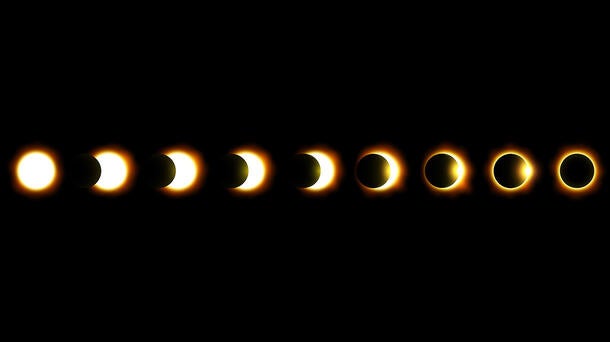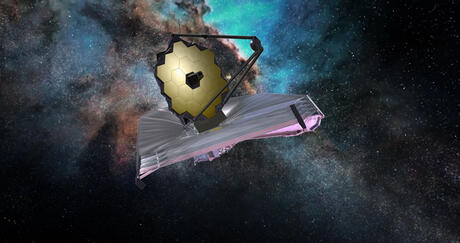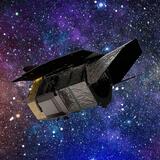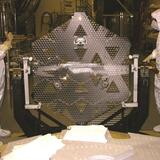On April 8, millions of viewers across North America will put on their solar glasses and turn their eyes to the skies to watch a rare total solar eclipse as it passes over Mexico, the United States and Canada.
During the eclipse, as the moon completely covers the face of the sun, a strip of land across 13 U.S. states will briefly plunge into darkness in the middle of the day. It’s a once-in-a-generation celestial phenomenon unlike any other.
At L3Harris, we’ve had our eyes on the skies for decades.
Human Discovery Begins with L3Harris
For more than 60 years, we’ve partnered with NASA to develop solutions that push the boundaries of human exploration and observation.
From our work on the iconic Hubble to the groundbreaking James Webb and Nancy Grace Roman space telescopes and beyond, L3Harris has helped shape humanity’s understanding of the cosmos for decades.
And we’ll continue to push the boundaries of human discovery for decades to come.
Did you know, we’ve provided avionics and propulsion for more than two thousand successful launches that have sent spacecraft to explore every planet in the solar system and safely carried more than 380 astronauts to space!?
Here are just a few other ways our cutting-edge technology has played a key role in advancing humanity’s understanding of the universe:
- Mercury Spacecraft: As John Glenn became the first American to orbit the Earth in 1962, he used our radio technology to communicate with tracking stations. Since then, our technology has been part of every crewed NASA mission: from Project Mercury to Apollo to the Space Shuttle to the International Space Station era and now beyond – as part of the Artemis missions.
- Apollo Mission: This history-making 1969 flight was enabled by our technology, including telemetry for command and lunar modules and a camera used by Neil Armstrong for extreme close-ups of the lunar surface.
- Space Shuttle Program: Our communications equipment flew on board the Space Shuttle Columbia in 1981 and has been used on all shuttle flights since, including a payload data interleaver that monitors conditions of various payloads.
- Hubble Telescope: This state-of-the-art telescope launched in 1990 using our fine guidance and focus control equipment. To this day, we’re at the forefront of unraveling the universe’s deepest secrets, such as dark matter and distant exoplanets, with cutting-edge imaging technology, integration and testing solutions for the world’s most sophisticated ground and space-based telescopes and satellites.
- International Space Station (ISS): Continually occupied since 2000, ISS depends on onboard audio/video distribution technology from L3Harris and is using our reconfigurable software-defined radio technology to advance communications technology.
- James Webb Space Telescope: L3Harris was a key member of the Webb industry team that was awarded the prestigious Collier Trophy for developing, building and launching the world’s largest, most powerful telescope. Webb launched in 2021 as the successor to Hubble and has since revealed parts of space and time never seen before. Our engineers and technicians played a critical role in the assembly, integration and testing of the telescope.
- Nancy Grace Roman Space Telescope: Work is currently underway at our Rochester, New York, facilities on this powerful NASA observatory. Set to launch by 2027, Roman will observe billions of galaxies and fuel discoveries on dark energy and dark matter, two mysteries of the universe that science cannot fully explain. L3Harris is responsible for some of the most important tasks to create the telescope, including refinishing the primary mirror.
- Mars Rovers: For more than 20 years, every U.S. Martian rover mission and orbiting spacecraft has relied on L3Harris’ transceivers and power and propulsion technology, including NASA’s Spirit, Opportunity, Curiosity and Perseverance vehicles. In fact, we’ve propelled missions to explore not only Mars – but every planet in the solar system and beyond.
- SOFIA Program: The Stratospheric Observatory for Infrared Astronomy (SOFIA) was NASA’s Boeing 747SP jet, extensively integrated by employees at L3Harris’ Waco, Texas aircraft modification center to carry a 20-ton, 98.4-inch diameter telescope assembly provided by the German Aerospace Center, Deutsches Zentrum für Luft- und Raumfahrt, or DLR for short. The aircraft completed its final mission flight in 2022 following years of mission flights studying the universe using a 20-ton infrared telescope revealed behind a large door that opened in-flight high up in the stratosphere.
Check out this comprehensive timeline of key missions and programs L3Harris has supported during our six-plus decades of partnership with NASA.
How to Safely Enjoy the Eclipse
Even exploring the farthest reaches of space can’t diminish the thrill of standing on solid ground, watching the moon and sun cross paths overhead.
Eclipses capture our collective imagination and remind us of humankind’s shared place in the universe. For more information on the April 8 eclipse, including tips on keeping your eyes protected if you’re in the path of totality, check out the resources at NASA.gov.
If you’re in the upstate New York region, make sure to stop by the Rochester Museum & Science Center during the weekend of April 6 - 8. L3Harris will sponsor events and activities throughout weekend in celebration of the eclipse.



